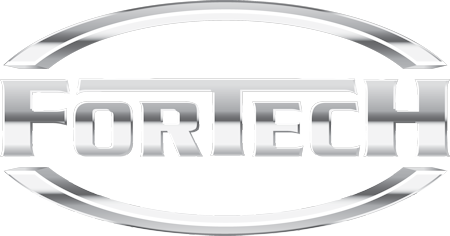Shearing
At ForTech our manufacturing team shears metals from .005” thick to .5” thick plate. We utilize both mechanical and hydraulic shears up to 10 ft. long.
Shearing utilizes a moving blade to push a workpiece against a fixed blade. Clearance between the blades vary from 5 to 40% of the thickness of the material, but depending on the material. Clearance is defined as the separation between the blades, measured at the point where the cutting action takes place and perpendicular to the direction of the blade movement. It affects the finish of the cut and the machines power consumption. This causes the material to experience highly localized shear stresses between the blades. The material will fail when the top blade has moved 15 to 60% the thickness of material, because the shear stress is greater than the shear strength of the material and the remainder of the material is torn.
Two distinct sections can be seen on a sheared workpiece, the first part being plastic deformation and the second being fractured. Because of inhomogeneities in materials and inconsistencies in the clearance between the blades, the shearing action does not occur in a uniform manner. The fracture will begin at the weakest point and progress to the next weakest point until the entire work piece has been sheared; this is what causes the rough edge. The rough edge can be reduced if the work piece is clamped from the top with a die cushion. Above a certain pressure the fracture zone can be completely eliminated. However, the sheared edge of the workpiece will usually experience work hardening and cracking. If the workpiece has to match clearance, then it may experience roll-over or heavy burring.
Depending on your project, ForTech will determine the best equipment to fit your needs.
To determine what type of shearing fits your needs, contact ForTech Inc. today.
